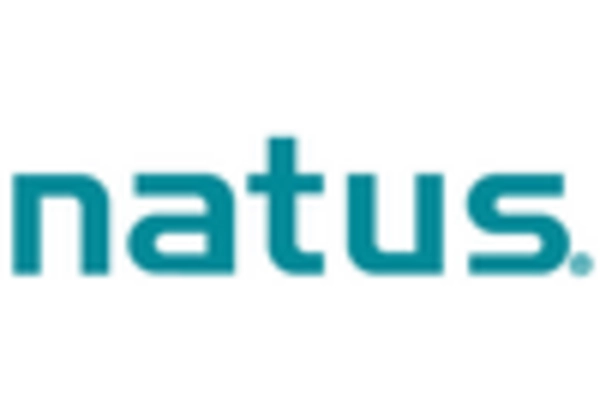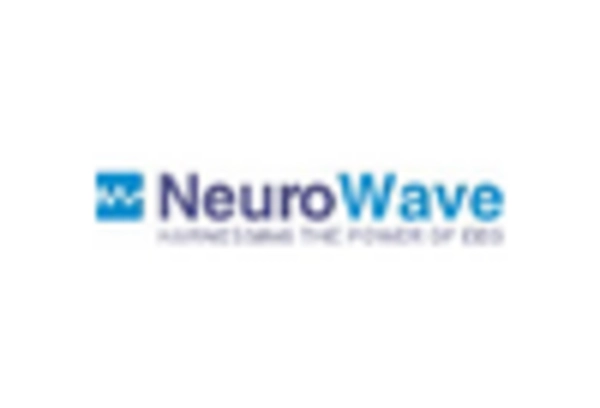Growing Geriatric Population
The aging population is contributing to the growth of the Intracranial Pressure Monitoring Market. As individuals age, they become more susceptible to various neurological conditions, including dementia and cerebrovascular diseases. The World Health Organization has indicated that the global population aged 60 years and older is projected to reach 2 billion by 2050. This demographic shift is expected to increase the demand for effective monitoring solutions, as older adults often require more intensive medical care. Healthcare providers are thus likely to prioritize investments in intracranial pressure monitoring technologies to cater to this vulnerable population, driving market growth.
Focus on Patient-Centric Care
The shift towards patient-centric care is influencing the Intracranial Pressure Monitoring Market. Healthcare providers are increasingly prioritizing patient outcomes and satisfaction, leading to a demand for more accurate and less invasive monitoring techniques. This focus on patient-centric approaches encourages the development of innovative monitoring solutions that minimize discomfort and enhance the overall patient experience. As healthcare systems strive to improve quality of care, the adoption of advanced intracranial pressure monitoring technologies is likely to increase. This trend not only supports better clinical outcomes but also aligns with the broader movement towards personalized medicine, further propelling market growth.
Increased Healthcare Expenditure
Rising healthcare expenditure across various regions is positively impacting the Intracranial Pressure Monitoring Market. Governments and private sectors are allocating more resources to healthcare, which includes investments in advanced medical technologies. This trend is particularly evident in developed nations, where healthcare budgets are expanding to accommodate the growing demand for specialized medical services. Enhanced funding allows healthcare facilities to acquire state-of-the-art intracranial pressure monitoring devices, thereby improving patient care. As healthcare expenditure continues to rise, the market for monitoring solutions is expected to flourish, reflecting the commitment to enhancing neurological care.
Rising Incidence of Neurological Disorders
The increasing prevalence of neurological disorders is a significant driver for the Intracranial Pressure Monitoring Market. Conditions such as traumatic brain injury, stroke, and brain tumors are becoming more common, necessitating effective monitoring solutions. According to recent estimates, the incidence of traumatic brain injuries alone is expected to rise, leading to a greater need for intracranial pressure monitoring. This trend is prompting healthcare facilities to invest in advanced monitoring technologies to ensure timely intervention and improved patient management. Consequently, the market is likely to expand as healthcare providers seek to enhance their capabilities in managing these complex conditions.
Technological Advancements in Monitoring Devices
The Intracranial Pressure Monitoring Market is experiencing a surge in technological advancements, particularly in the development of sophisticated monitoring devices. Innovations such as wireless monitoring systems and advanced sensors are enhancing the accuracy and reliability of intracranial pressure measurements. These advancements not only improve patient outcomes but also facilitate real-time data transmission to healthcare providers. The integration of artificial intelligence and machine learning algorithms into monitoring systems is expected to further refine diagnostic capabilities. As a result, the market is projected to grow at a compound annual growth rate of approximately 6.5% over the next few years, driven by the demand for more efficient and effective monitoring solutions.


















Leave a Comment